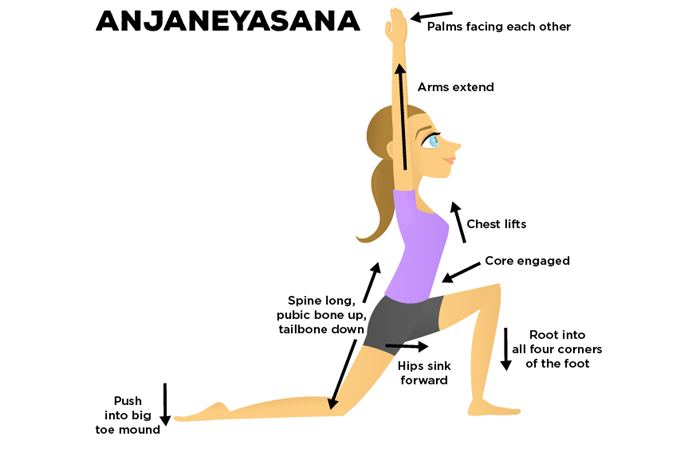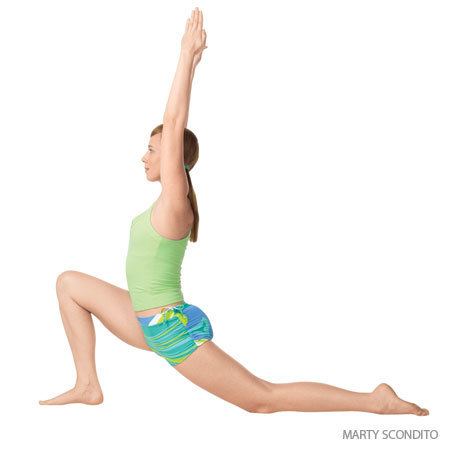Pose type Standing | ||
 | ||
Note Consult a doctor before beginning an exercise regime Strengthens Supporting muscles for the knees Stretches Iliopsoas, Rectus femoris muscle, Sartorius muscle Preparatory poses Adho mukha śvānāsana, Utkatasana, Supta Virasana, Virasana Follow-up poses Virabhadrasana I, Virabhadrasana III Similar Adho mukha śvānāsana, Virabhadrasana I, Utkatasana, Ardha Candrāsana, Hanumanasana | ||
Anjaneyasana health benefits yoga health for beginners the salutation pose yoga asana
Anjaneyāsana is an asana. The name Anjaneya is a matronymic for Hanuman whose mother's name is Anjani. Hanuman is a central figure in the epic Rāmāyaṇa and an important Iṣṭa-devatā in devotional worship. The name crescent pose is typically used in English. The name half-moon pose is sometimes used for this asana in Sivananda yoga and its derivative styles.
Contents
- Anjaneyasana health benefits yoga health for beginners the salutation pose yoga asana
- Yoga to develop mental strength anjaneyasana warrior pass and adho mukha vrksasana handstand
- Description
- Drishti
- Bandhas
- Variations
- Benefits
- References

Yoga to develop mental strength anjaneyasana warrior pass and adho mukha vrksasana handstand
Description
Version 1:
- Starting from a lunge, bring down the back knee.
- Raise the arms forwards and up.
Version 2:

- The same as version 1, but with the back knee elevated and extended with back foot in dorsiflexion (toes tucked, heel lifted).
Drishti

The Hastagrahe dṛṣṭi (Sanskrit: हस्तग्रहे दृष्टि ) at the palm of the hands is the correct dṛṣṭi (visual focus) for Anjaneyasana in Ashtanga Vinyasa Yoga.
Bandhas
Use of bandhas increase the stability of the body in this asana. Both mula bandha (root lock) and uddiyana bandha (abdominal lock) may be engaged. This combination creates an axial extension in the spine which assists in supporting in the torso as the chest is brought up and back. A "sternal crunch" can be substituted for the bandhas here, also creating axial extension and helping draw the psoas major into a deeper stretch.
Variations
Arm position may be on the ground as in Surya Namaskar
Arms may be crossed in front, or bound behind the back. A twist variation is called parivṛtta anjaneyasana.
